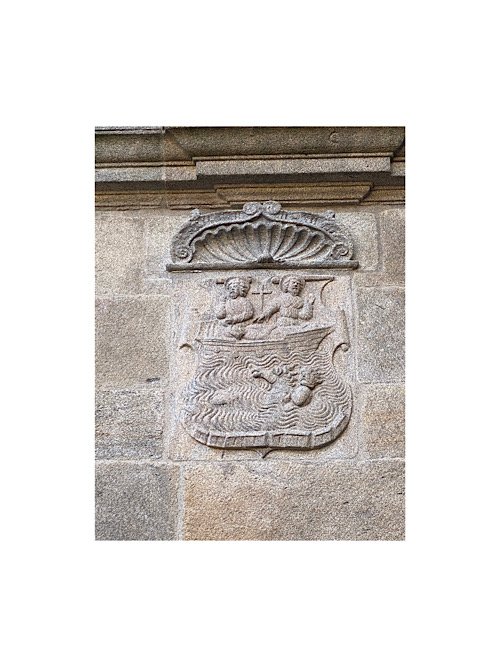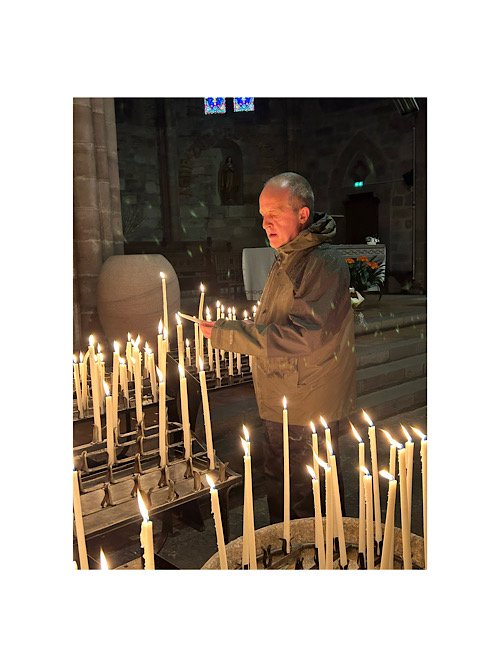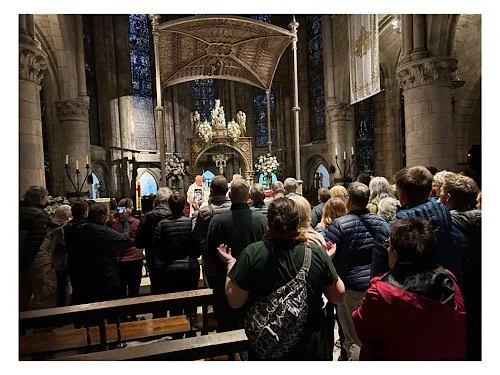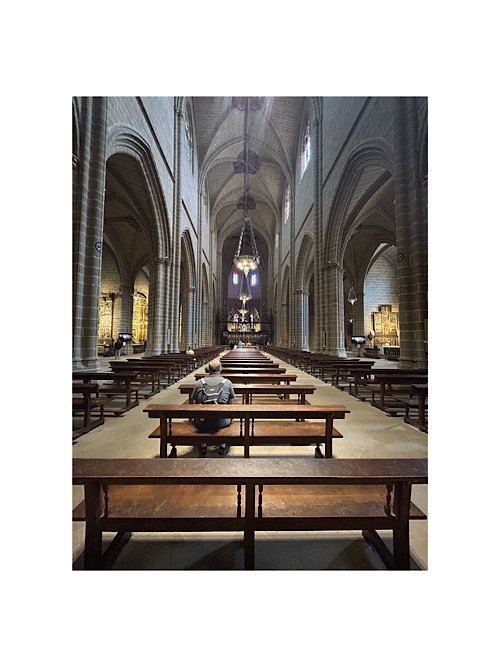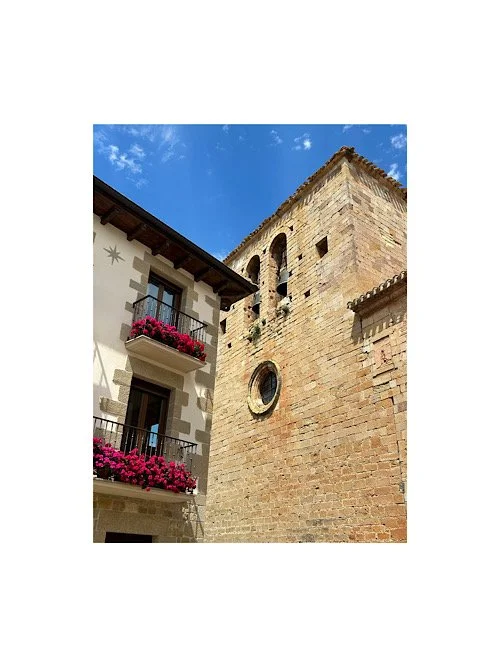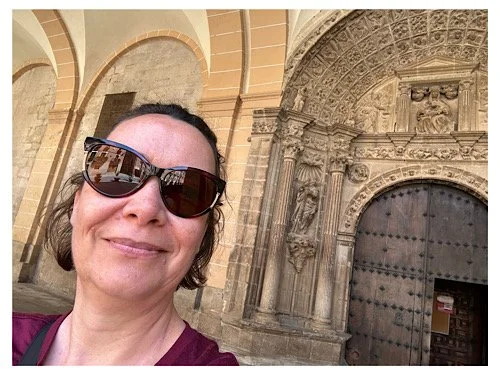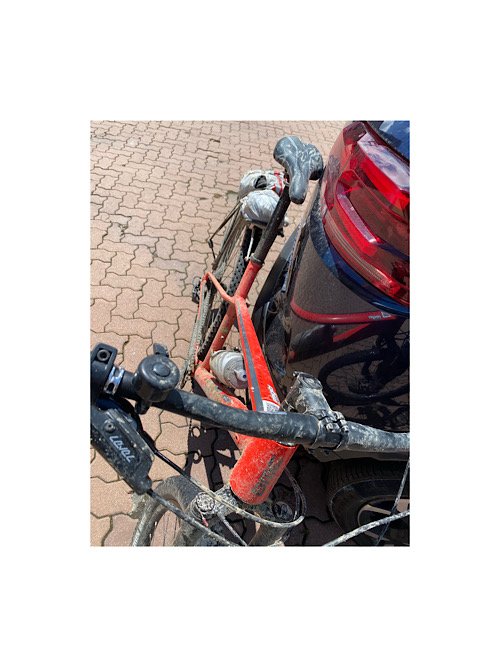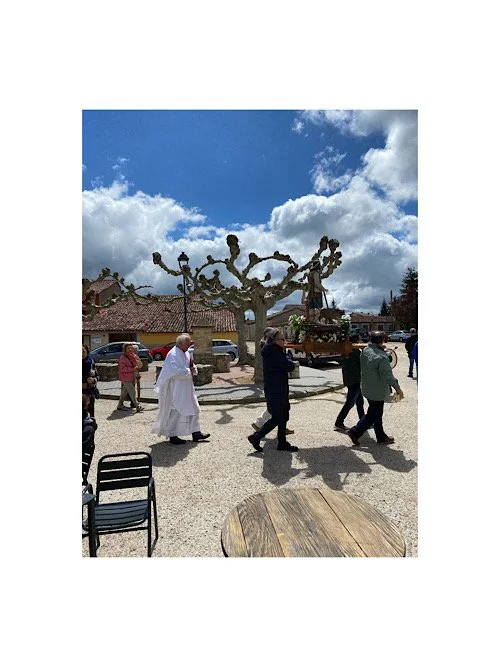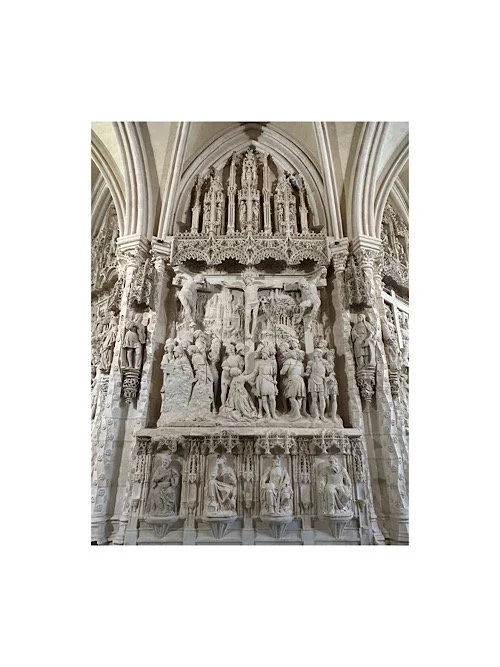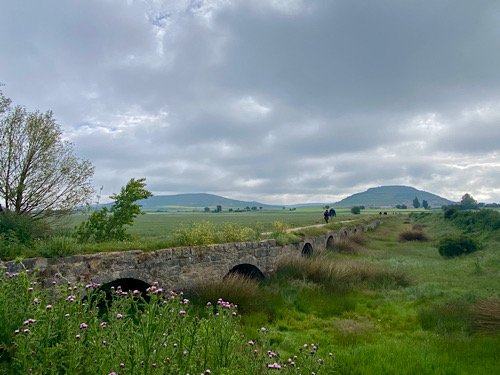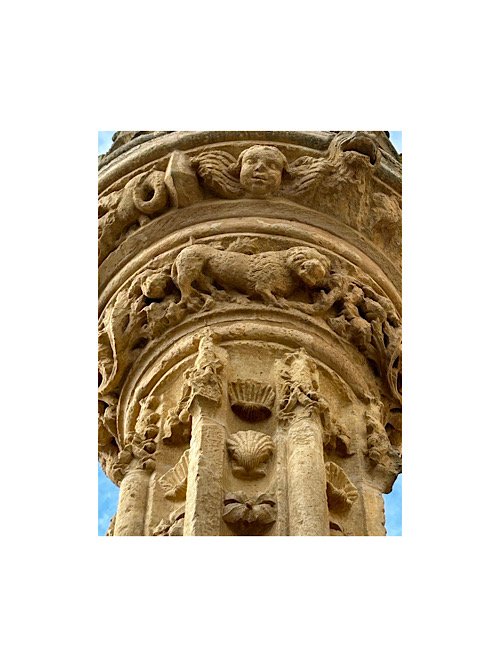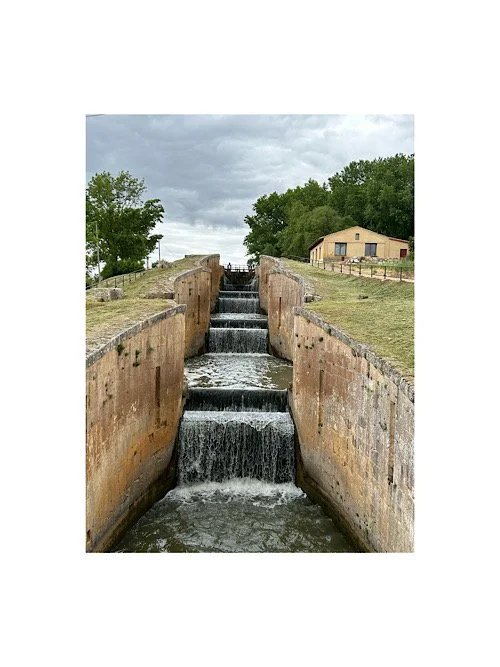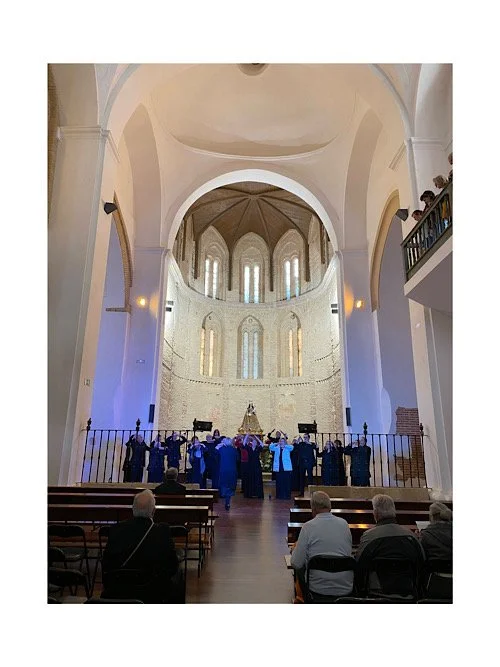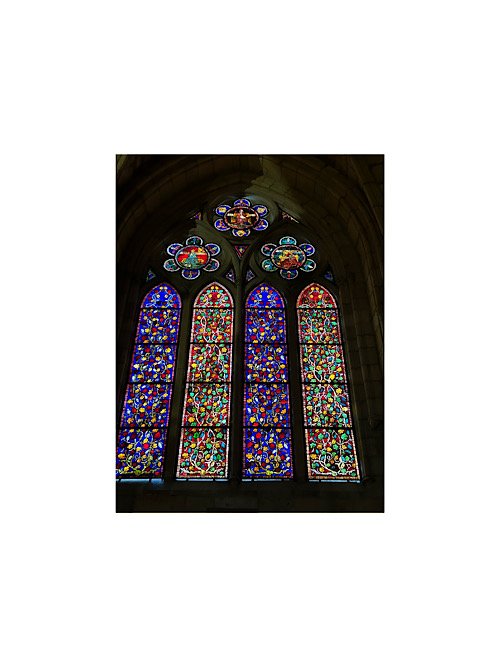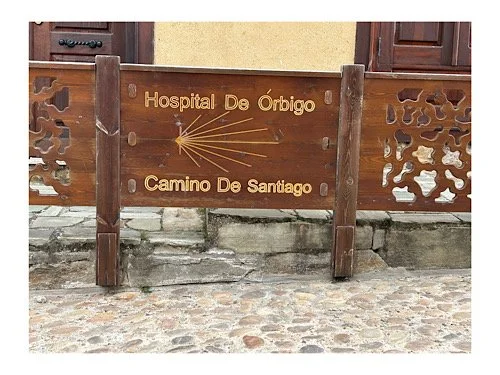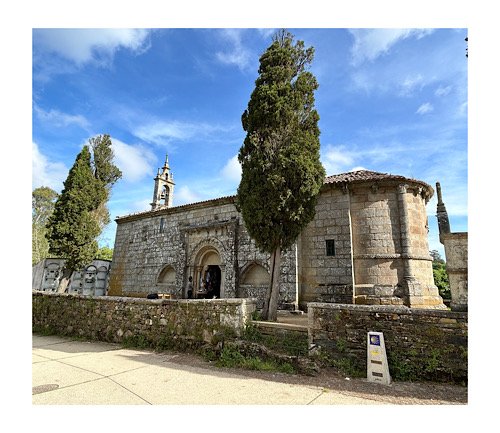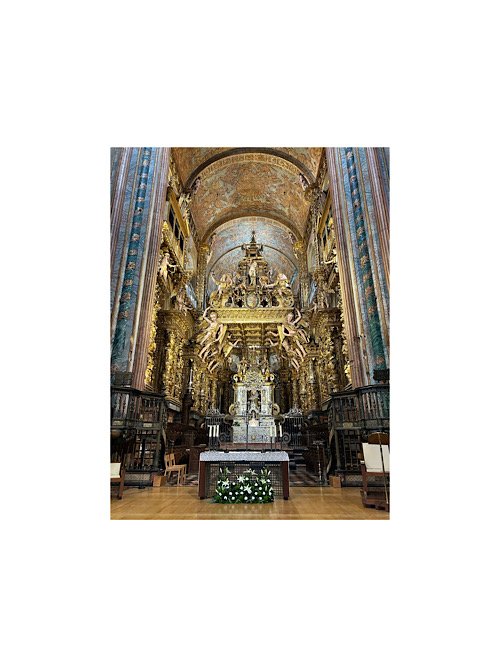¡Buen Camino, Peregrino!
The Camino de Santiago is a pilgrimage to the final resting place of Spain’s patron saint, Santiago or Saint James. The way, as it is sometimes called, leads to the capital city of Galicia, Santiago de Compostela.
James the Great, as he was known, was one of Jesus’ Twelve Apostles. According to the Catholic beliefs, James, together with his brother, John, were one of the first disciples called by Jesus. He evangelized all through then Roman Spain.
Upon his return to Jerusalem in the year 42, Santiago was beheaded by King Herod Agrippa I, making him the first apostle to shed his blood for Christ. The king forbade his body to be buried in Palestine, and 2 of James’ disciples decided to steal the beheaded body. They placed it in a rudderless boat and prayed to God to guide them. They drifted to Iberia (now Galicia in northern Spain) where they buried the body in what would later become Santiago.
It wasn’t until 8 centuries later that a hermit named Pelayo discovered Santiago’s tomb. Pelayo, who was guided by a bright field of stars, notified the bishop, who confirmed that it was indeed Santiago’s body, and ordered a chapel to be built. The place was appropriately named Santiago de Compostela or ‘Saint James of the field of stars’.
During the Middle Ages, Santiago de Compostela became one of the most famous places for pilgrims in Europe, who were seeking penance and forgiveness. A vast network of paths and routes were established so people could travel more easily from their homes to the sacred city. Yes, from their homes! Imagine the great distances and the hardships along the way!
With its various routes, each offering their own distinct charm, the Camino these days ,attracts not only pilgrims, but also hikers, sports fanatics, and adventurers from all over the world. They all walk or bike their own Camino for different reasons and motivations.
Bert was the pilgrim in our family and decided to bike the Camino Francés or the French Way. I, however, wasn’t that motivated to bike 790 km (490 mi). So I decided to drive and support Bert along the way, while also doing some sightseeing. In other words, I completed the Camino by car.
Day 0: Saint Jean Pied-De-Port, France
After having spent the night in Saint-Jean Pied-De-Port, it was time to explore the small town at the foothills of the Pyrenees.
Rue de la Citadelle, the narrow cobbled street in the old town on which millions of pilgrims’ boots had pounded for over 900 years, was still quiet in the early morning hours.
We walked up the steep street, passed through the Porte de Saint Jacques, the old city gate through which medieval pilgrims arrived from all over France, and made our way up to the Citadelle, which was built in the 1600’s to defend the town.
The views from up here were great and we spent quite some time up there taking pictures.
Rue de la Citadelle slopes down to the ancient gothic church Eglise de Norte Dame du Bout de Pont. This dark red stone church was very peaceful inside. Tons of candles were burning which made for a mystical and beautiful atmosphere. We lit two candles to bless Bert’s journey and our family and friends at home.
It was time for Bert to register at the pilgrims’ office, where he received his official passport and the first stamp. From now on, he would have to collect two stamps per day as proof that he completed the 790 km (about 490 mi) bike ride.
He also received a large scallop shell to tie to his bike or backpack. Since the Middle Ages, these scallops had been used to identify the pilgrims on the Camino. Bert was now an official Peregrino!
Afterwards we went to the local market, sampled some local foods, and bought homemade pistachio nougat, sweetened with honey. It was fingerlickingly good!
In the afternoon, Bert tried out his rental bike, while I met up with him at the foot of the pass that takes pilgrims to Ronceveaux. It turned out to be an excellent spot for bird watching.
We saw lots of griffin vultures and…sheep. While we were looking for birds, our car was suddenly surrounded by a herd of bleating sheep!
We ended our day with a delicious French meal and secretly hoped the food was going to be as delectable for the next 3 weeks.
Day 1: Today is the Day!
Today, Bert started the Camino Frances at the Rue de la Citadel, on the famous Nive Bridge. It was a dreary and cold day and I hoped that by the time we reached Valcarlos, the sun would break through.
At the town of Valvcarlos, I was welcomed by the twice ringing of the church bell. It was 2pm so when Bert arrived, it was time for lunch and a snack. We found a bench from which we had a lovely view of the green hills.
An interesting mural sat next to the church. It depicted a man dressed in traditional Basque dress walking towards and welcoming a pilgrim with the beautiful countryside sweeping down behind them.
Down the street sat the very modern sculpture, Monumento Peregrino. The artist had merged abstract human forms with archaic Basque solar disks to create this interesting, yet simple looking, piece.
From here, I drove to Roncevalles, a tiny town consisting of an old monastery complex, with only 18 inhabitants. The road over the 1057m (3468 ft) high pass was very steep with several hairpin turns. To top it off, I had to drive through some very dense fog. This was not going to be easy cycling for Bert!
For thousands of years, Roncevalles had been a pilgrim stop, where monks used to offer refuge and food to weary and sick travelers. The monastery’s ringing church bell guided exhausted travelers through the thick mist. These days, accommodations were still offered in the ancient but updated buildings, albeit not by monks anymore.
The 13th century Iglesia de la Collegiate de Santa María was impressive. Upon entering the dark sanctuary, the gothic ceiling immediately gave me the feeling of being sucked up into the sky.
The gorgeous stained glass window depicting Mary, was highlighted by the afternoon sunlight. It was magnificent!
I was the only one inside this peaceful church and it was perfect to sit, reflect, and contemplate life.
Every evening, there is a mass and a pilgrims’ blessing held at the sanctuary. We attended too and even though all was spoken in Spanish and we only understood a word here and there, it was a neat experience and a good way to end a very intensive day.
Day 2: History, Rolling Hills, and Pilgrim Stories
Sleeping in today was necessary because Bert needed to recover from yesterday’s strenuous ride. After breakfast, we drove the car to Puenta de Ibañeta, yesterday’s highest point of the pass. There was no fog today and it was sunny, so we could actually enjoy the gorgeous views.
The top of the pass also marks the spot of the Battle of Roncevaux. In 1778, while part of Charlemagne’s army marched through Roncevaux Pass in the Pyrenees, a large guerrilla force of Basques ambushed the Frankish rear guard and wiped them out. The attack was in retaliation for the king’s destruction of Pamplona’s, the Basque capital, city walls.
Among the casualties were several of Charlemagne’s most important knights. One of them was Roland, who was the inspiration for one of the oldest known works in French literature, the poem Song of Roland.
This place was perfect for a drone movie. Bert set up and navigated the drone so it flew over our heads and Roland’s monument, while capturing the magnificent view behind us.
RIP drone!
It was time to move on. Bert hopped on his bike, while I climbed in the car.
My first stop was Burguete, also nicknamed Hemingway’s village. The famous American writer used to stay at Hotel Burguete, where he met up with friends to go trout fishing. And indeed, Ernest Hemingway talks about this place in his novel Fiesta: The Sun also Rises.
The drive was beautiful and I was constantly treated to gorgeous panoramic views of the rolling hills. Left and right, peregrinos were traversing the narrow, sandy trails.
It was a very hot day (27C/80F), so when I spotted a food truck along the road at the top of the hill, I didn’t need any encouragement to stop and drink a refreshing lemonade. After sitting here for a bit, I was joined by several pilgrims who had the same idea. An older Dutch and younger Austrian couple joined me at my table and we started chatting. The Dutch people were on their way to Santiago de Compostela, as were the Austrians. Except, the latter started their pilgrimage at home! So far they had crossed Switzerland, France, and were now traversing Spain. Talking about perseverance!
Two sisters from the US and an older Asian man, were my next companions. The siblings were celebrating the end of their university studies, while the man was walking his second Camino. He was on a mission to complete all! It was so much fun to listen to the stories from people from all over the world!
Finally Bert joined me. We decided to eat lunch here as it was such a peaceful and relaxing spot to sit. The beautiful views didn’t harm either.
Zubiri, the next town on the route, was only a few kilometers down the road. It was a pilgrim hotspot due to the many restaurants and accommodations. We, however, were only here to see the medieval bridge, Puente de la Rabia or Rabies Bridge. Allegedly, this bridge protected animals from rabies if they were led across three times. I could only take their word for it.
Bert showed me his shoes and told me he couldn’t get out of the pedal clickers because the heel came off. Luckily I always have duct tape with me because, you know, one can fix anything with duct tape.
After the engineering of the shoe, following the yellow shells and arrows it was, all the way to Pamplona.
Day 3: Rest Day in Pamplona
We stayed at a nice apartment right at the Plaza de Toros, which houses the famous bullring in Pamplona.
Every year during the Fiesta de San Fermín, more than one million spectators gather to witness the highest profile event of the festival: The Running of the Bulls. Every morning, adrenaline junkies dressed in white pants and shirts completed with a red belt and neckerchief, run in front of a small group of bulls through Pamplona’s narrow streets, all the way to the famous bullring., where a cavaleiro, or bullfighter, fights and torments the bull until it dies.
Needless to say that, every year, many people are injured or sometimes even die because they are gored by the bull’s horns.
In front of the arena stood a bust of Ernest Hemingway, whose very first novel, published in 1926, Fiesta: The Sun Also Rises, was inspired by this very spectacle. And it was this bestseller that placed Pamplona on the world map.
Guess what I did? I went in search of an English edition of this famous book so I could have it stamped with a Camino stamp at Pamplona’s cathedral. However, finding this printed work, translated or otherwise, turned out to be easier said than done! But I was determined and at the end of the day, I found a paperback edition in a cute, tiny bookshop. Success!
Above its door hung a clock counting down the days to the 2024 bull run. Fifty-seven days, seventeen hours, twenty-one minutes, and thirty-seven seconds to go!
Pamplona’s famous cathedral’s façade was a bit bland, but the gothic interior made up for it.
I especially enjoyed a visit to the museum because there were some recent excavations going on and the history of the city was thoroughly explained.
The city’s location attracted civilizations long before Pamplona was actually founded. It used to be the most important town of the Vascons, the ancestors of today’s Basques. They named the place Iruña, which means “city” in Basque.
Later, the city took on the role as a Roman military outpost for Pompei the Great. He dubbed it Pompaelo.
Next, the Visigoths took over but were ousted by the Moors in the 8th century. They continually battled with Charlemagne, who tried to expand the French empire.
Through this all, the Vascons stayed united and eventually gained enough power to become independent and formed the kingdom of Navarra. To this day, the Basques still fiercely guard their culture and traditions, and even now the province is still called Navarre with Pamplona as its capital.
Before we ate lunch at the historic Cafe Iruña at Plaza del Castello, Pamplona’s large central square, I needed to purchase a new water bottle (mine fell and cracked) and I found a cute aluminum Camino bottle that fitted perfectly in my travel purse. I quickly filled it up with the refreshingly cold water from the public water fountain.
Founded in 1888, our lunch place was Hemingway’s favorite hangout. Following in his footsteps, we ordered a glass of house rosé to enjoy with our delicious food.
At the square of the ornate town hall, we took a break and enjoyed some refreshments.
It is here that on every July 6th, the mayor appears on the balcony to shoot a small rocket to indicate the start of the San Fermín Festival. At this square, the bulls are released on a daily basis too. Later, while back at home, I witnessed this spectacle online and I couldn’t believe how gigantic the crowd was!
During siesta, we went back to our apartment to do laundry. Dryers are unheard of in Spain and we hoped our clothes would be dry by the next day.
Bert also tried to fix his shoe with some good old Pattex glue that we found at a shop that sold everything imaginable. For the uninitiated, Pattex was a glue we used as kids. It is quite strong, looks like yellow boogers, and has a distinct scent that can make you high.
To end our day, we ventured to the small streets where one meanders from one pintxos bar to the next to try out local dishes. Pintxos are small plates similar to tapas and in my opinion they are tapas. However, saying that out loud in this area, would probably get you lynched!
Day 4: Churches and Some Birding
We woke early to drive to a nearby lake to do some birding. It was peaceful and beautiful out there and I thoroughly enjoyed being out in the country, walking, and exploring. We spotted a ton of birds and Bert even saw several lifers!
From here, we drove to Zariquiegui so Bert could pick up the Camino trail again. While he took off, I visited the 13th century, robust, Romanesque church that used to be the center of the once flourishing town. Sadly, this town was almost completely wiped out by the plague.
I drove on to Santa Maria de Eunate, a tiny but enigmatic Romanesque church that was built in 1170. It surprised me to see this robust chapel-like church standing isolated in the middle of the fields. I wondered why it was erected in such a solitary place. It turned out that nobody really knew.
The interior of the octagonal church was very serene and dark because it only had a few small windows. I loved how simple it was inside.
The wooden sculpture of Mary looked very interesting as did, what I think was, an angel playing a flute carved in the capital of one of the columns.
The 33-arched cloister was decorated with all kinds of elements from nature. It was amazing! Bert had to come by and see this! It was a 10km (6 mi) detour for him, but I figured we could have a picnic in the shaded and peaceful garden.
While we were walking through the cloister, Bert pointed out an array of funny looking symbols, carved into the brick. In the brochure I read that these were stone masons’ marks. They used to be paid by the brick so it was imperative that they signed their pieces.
We met again at Puenta La Reina, where we marveled at the medieval 6-arched bridge spanning the Arga River. It was a very picturesque place.
When Bert left again, I strolled to the Iglesia de Santiago so I could take a picture of the famous Santiago statue.
The doorway was one of the finest examples of Mudéjar architecture (style of Iberian Muslims in Christian Spain). Indeed, it was easy to see the Islamic-style scalloped arches intertwined with Persian and Romanesque symbols.
The Camino now led to the church of the minuscule town of Cirauqui. From afar, I noticed the church sat on top of a hill, and I already dreaded navigating the street pattern with my large car.
Sure enough, I ended up in a spiderweb of tiny streets that I found impossible to traverse. I kept seeing the church’s steeple but was unable to reach it. I became so annoyed that I simply parked my car on a little square and started walking up the hill!
Upon reaching the building, I noticed that the entrance was in the Mudéjar style again. Most interestingly, there was a carved Chi-Rho above the door. This symbol consisted of the first two letters of Christ’s name in Greek and predated the symbol of the cross. The letters alpha and omega were hung on the horizontal arms of the Chi-Rho, but they were in mirror image! I found out that it indicated that either Hebrews or Arabs engraved it.
At some point, Bert made it up too and he was suffering. Understandably, as it was a whopping 35C (95F)! He looked so wiped out, that the owner of a nearby hostel worriedly walked over to ask if he could be of any help. Luckily he was fine again after drinking some electrolytes.
Right outside the town, the Camino ran across an authentic Roman road and bridge. Even though the bridge was somewhat restored, it was still pretty cool to see this monument. The road, however, was untouched and I couldn’t help but think about all the people that had marched across these rough cobbles in the past 2000 years!
Estella was the end point for the day, but because we were both tired, we decided to not visit the city and eat dinner at the hotel.
Day 5: Another Glorious Day
Just outside Estella lies the famous Irache winery. To treat the pilgrims, they not only had a water fountain, but also a red wine fountain! Tradition dictates one has to drink the wine out of the camino shell. Of course Bert had to try this too.
I noticed an arrow pointing to a local blacksmith, who turned out to be making beautiful metal art pieces.
I had a chat with both father and son, the latter having learned the trade from his dad. I absolutely loved the contemporary looking pilgrim and couldn’t resist buying it.
The weather was glorious today, and I decided to wait for Bert at one of the many patios of the cute and vibrant town of Los Arcos.
Later, we visited the overwhelmingly gold-decorated baroque church so Bert could have his Camino passport stamped.
While Bert had to bike through the fields, I drove directly to Logroño and visited this capital city of La Rioja province. And like before, there were lots of churches to be visited in the medieval part of town.
The Iglesia the Santiago was, naturally, decorated with tons of shells and sculptures of Saint James.
The statue of the “black” Mary was also interesting to see. It made me wonder if this had to do with people in the south having a darker skin tone than in the north.
Next to the church, a giant Game of the Goose game board was painted on the plaza. I have such fond memories of playing this board game when I was little. However, contrary to the large outdoor game, mine had no spiritual significance.
I found some of the streets to be very dilapidated. Not only was every inch covered in graffiti, but druggies were lying in doorways mumbling incoherently. It was really sad to see.
After Bert arrived, we went out to dinner and visited the cathedral to obtain a stamp to add to his credentials.
Day 6: Churches, Churches, and more Churches
Today was another church kind of day. Because the Camino is an actual pilgrim trail, it passes by every single church along the route.
In Navarette, I really wanted to see the Flemish triptych, but, unfortunately, it wasn’t on display at the church. I had to be content with a picture that hung on the wall.
Naturally, there were more statues and images of Santiago and an a mind-blowing, gold-covered altar piece. Honestly, I was becoming a bit disgusted by all the riches inside the sanctuaries. It was becoming too much!
After filling up the water bottles, Bert biked and I drove to Nàjera. The town sat on the bank of a river but wasn’t really that picturesque.
However, I did see storks nesting by the church steeple, which would, from now on, become a daily spectacle on the route. We also enjoyed a relaxing lunch on the plaza here.
At Santo Domingo de la Calzada’s cathedral, I was treated to a fun surprise. A live chicken and rooster were kept in a very ornamental cage inside the church!
Allegedly, these 2 birds were the descendants of the fowl that saved a boy’s life in the 12th century. The boy was accused of stealing from an innkeeper and was going to be hanged. Apparently, he was innocent and Santo Domingo (made a saint because he dedicated his life to God and made the Camino safer by constructing bridges and actual roads) intervened.
The judge, who was about to devour a meal of roasted chickens, said he would release the accused boy as soon as the hen and rooster on his plate sat up and sang. And of course that happened. Or that’s how the story went.
The live fowl looked down on Santo Domingo’s tomb, which is also adorned, by you guessed it, 2 birds.
The art inside the cathedral was all about the chickens. It was really funny.
From May 1st through May 15th, the patron saint, Santo Domingo, is celebrated. During the Fiestas del Santos, there is a daily Catholic mass, a procession in which the statue of the saint is carried around town, and lots of eating and drinking (especially the latter!).
At dinner time, we ran into a Belgian woman from Diksmuide. After having taken Spanish language classes here more than 30 years ago, she visited the town every year. She had befriended many locals and enjoyed participating with them in the celebrations. She joined us for a drink and when we walked away, we knew her entire life story, with the date of her foot surgery and all!
Day 7: Pouring Rain!
Menacing clouds loomed over us this morning, but like a dedicated “soigneur”, I hauled the equipment to the car. If you are into cycling you’ll know that a “soigneur” is responsible for looking after riders off the bike and for handing out food, drinks, and clothing during a race. That was me!
It was an also cold. We went from 25C (77F) to 9C (48F) overnight! So it was necessary for Bert to wear his windbreaker and thermals.
Belorado was our first meeting point and by the time I arrived, it was pouring! I immediately headed for a coffee shop so I could stay dry, sip some tea, and work on my blog notes.
Bert reached the destination muddy and soaking wet. And he was freezing on top of it. The “soigneur” was prepared and had brought dry and warm clothes for him. A hot cuppa and a sandwich brought him back to life.
On my way to the coffee shop I had spotted a laundromat, so while Bert rode on to our final destination of the day, I decided to pop the muddy and wet cycling clothes into the washer. And they even had dryers! What a luxury!
It finally stopped raining and I was able to linger in town. And I found a bunch of really cool murals while walking around.
I also stumbled upon the Paseo del Animo. The latter was a narrow street that had hand and footprints of many illustrious people. It was kind of like a mini Walk of Fame.
The famous Spanish cyclist, Miguel Indurain was one of them.
A bit farther down, I found Martin Sheen’s imprints. He played in the movie The Way in which a father (Martin Sheen) goes to France after the death of his son, who was walking the Camino. The dad decides to complete The Way as a tribute to his deceased son. It’s actually a very good movie.
Villafranca Montes de Oca, a one street town with a church on a little hill, was where we ended the day.
We spend the night in a restored 14th century hospital that used to serve peregrinos. It was an interesting building and the decor was pretty neat. Obviously, I had to try out the giant chair, but it was quite uncomfortable. I also think our old, metal bed dated from the 14th century as we could feel every spring through the mattress and it creaked and shook with every movement we made. Needless to say that we didn’t sleep too well!
Day 8: A Not So Exciting Day
It was another very cold morning and puffer jackets and merino wool sweaters had to be unpacked.
I first met Bert on top of a ridge where the wind was howling, which made it bitterly cold. It was fitting for such a grave place, where 300 people were murdered and lay buried in a mass grave. All were the unfortunate victims of Franco’s 1930’s fascist regime. This Spanish dictator’s reign was marked by brutal repressions and the use of forced labor, concentration camps, and mass executions that led to between 30,000 and 50,000 deaths throughout Spain. Interestingly, he stayed in power till the 70’s.
When Bert arrived, he was so cold, he had to keep wearing his down jacket while cycling!
We planned to eat lunch in Atapuerca, a small and rather dilapidated village at the foot of the Atapuerca mountains. At this limestone mountain range, many caves were discovered that not only held fossils, but also remains of the earliest humans in Europe. Since 1977, archeologists have discovered 5,500 human skeletal remains of which 28 represent the Homo heidelbergensis, a human species that gave rise to the Neanderthals. Too bad advanced reservations (which we didn’t have!) were required to visit the archeological sites, because I think it would have been mind blowing to walk through trenches littered with fossils.
Our lunch was very meager, because the sole cafe that was open had only one sandwich and a few plastic wrapped pastries left. How were we going to survive till that ultra late dinner time?
While we were sitting there, the church bells started ringing and suddenly a slow procession, led by 3 musicians and a priest, walked by. According to the establishment’s owner, today was the day to honor the town’s patron saint. This was Catholic tradition at its finest and to be honest, it was quite a unique event to witness. At the same time, it was rather bizarre because the ceremonial procession was so tiny. Most likely, this was about the entire population of Atapuerca.
From here, it was only a few more kilometers to Burgos, where we would stay and visit for a few days.
Day 9: Rest Day in Burgos
Today, we were going to meet the famous “ son of Burgos” and one of Spain’s national heroes: Rodrigo Diaz de Viva, or better known as El Çid.
In 11th century Spain, Christian and Muslim kingdoms fought bitterly for faith and power. One of the knights and leaders in these wars was El Çid. In fact, he was a bit of an opportunist and was driven by wealth and fame and therefore fought on both sides. Needless to say that the large statue in Burgos shows Rodrigo Diaz de Viva astride his horse and thrusting his sword, ready to ride into battle.
On the bridge was yet another statue of El Çid and of his beautiful wife, Doña Jimena, lovingly looking at him from across the street.
Both had their final resting place at the Cathedral de Santa María, better known as the Burgos Cathedral.
Looming large over the city, the gothic cathedral stood majestically in the heart of the medieval town center. Construction started in 1221 and it took 22 years to finish.
The façade was incredibly opulent and every inch of this giant, magnificent building was decorated with dazzling details. Looking up at the tall, ornamental spires made me a little dizzy!
The interior was even more mesmerizing!
I was surprised to see that the nave wasn’t very big, which was very unusual. Much of the expanse was actually taken up by the large side chapels. Honestly, most were the size of small churches themselves!
With its intricate carvings, the elegant filigree 8-pointed star in the dome, and the overwhelming altar pieces, this cathedral was going to keep us busy for hours!
While we were fascinated by it all, I couldn't help but reflect on the excesses of the church as an institution. The extravagant display of wealth was actually rather obnoxious.
I learned that churches and cathedrals from this time era used to have adorned walls and entryways. So far, I had only seen images in cream color, but in Burgos, colorful stone carvings were very well preserved. They were magnificent!
At the visitor center’s shop, Bert was able to add the Burgos stamp to his credentials. The front of the passport was starting to fill up nicely!
It was after one already and we were getting hungry. We had learned that it was better to eat a gigantic lunch so we could make it to the late dinner time without being famished. We understood immediately why Burgos was nominated as the Spanish Gastronomy Capital. Our food was phenomenal!
After lunch, we walked up to the Mirrador de Castillo, from which we had an amazing view over the city. We had to conquer quite some stairs and after having cycled several days in a row, Bert was exhausted. We decided to simply walk back to the apartment and take a siesta. We were getting accustomed to the local habits!
After a nap (Bert, not me), we meandered through the labyrinth of narrow, cobblestoned, medieval streets and walked to the Plaza Mayor, a beautiful square surrounded by colorful buildings.
From here, we made our way to the impressive gate, Arco de Santa Maria, which was built in the 14th century as a tribute to the emperor.
Once through the gate, we could march across the Paseo, a promenade next to the river. Yes, at this point, we were not strolling anymore. It had become so brisk, that we had to walk at a fast pace to stay warm!
We crossed the bridge into modern Burgos because Bert really needed new cycling shoes, which he luckily was able to find at a local bicycle store. He was all set to start his Camino again tomorrow!
Day 10: Fields and Endless Skies
From now on, it was cycling and driving over the Meseta, the high central plateau on the Iberian Peninsula. It was rather flat and mainly covered in expansive wheat fields. It was a very tough stretch for pilgrims because of the straight, seemingly unending, roads and the exposure to the elements.
Although this 200km (124 mi) stretch sounds monotonous, the charm of some small villages and the multitude of wildflowers turned the Meseta into a tranquil and colorful scenery.
We met up in Hontanas, which was a cute little town somewhere in the middle of the farm fields. As with many of the towns along the way, the church’s steeple defined the horizon.
I was pleasantly surprised by the modern and very cozy interior of the medieval Iglesia de la Immaculada Concepción. Colorful cushions adorned the old pews and Bibles in many languages were provided for use.
A little further up, stood a tiny dome-shaped chapel, which interior was painted sky blue and decorated with wreaths of flowers and seashells. The way it sat there in the middle of a poppy field, was really cute too.
On the way out of town, I drove past several underground cave-like bodegas, where locals store their wine. The entire scene really reminded me of The Hobbit.
A few kilometers down the road from Hontanas, the Camino passed under a half crumbling arch that belonged to a monastery that used to provide shelter and care to pilgrims during the Middle Ages.
The ruins that were left were really cool and made for some neat pictures.
One of the windows showed an interesting looking cross that only had 3 arms and thus was shaped like the letter T. After some research, I found out that it was called a Tau Cross. It was the symbol of the Order of the Antonines, who founded the monastery. But, Catholics back then also used the Tau as a symbol of conversion and commitment to the church.
“ And the Lord said to him: “Cross through the middle of the city, in the center of Jerusalem, and seal a Tau upon the foreheads of the grieving men, who are mourning over all the abominations which are being committed in its midst.”
And he said to the others, in my hearing: “Cross through the city after him, and strike! Your eye shall not be lenient, and you shall not take pity.
Kill, even to utter destruction, old men, young men, and virgins, little ones, and women. But all upon whom see the Tau, you shall not kill.”
We were going to stay the night in Castrojeriz and the approach to town was stunning. Poppies and daisies were flowering left and right under the bright blue sky. The ruins of a Visigoth castle stood on the top of the hill as if to protect the church and town below. It was all incredibly picturesque.
Because we couldn’t find any accommodations in town, we splurged and checked into a very nice hotel. It had a beautiful garden where one could sip wine and relax, but more importantly, there was a working a/c that was almost inaudible. What a luxury! And since there were free washers and dryers available, we took advantage of those too!
Day 11: Through Spain’s Breadbasket
Leaving Castrojeriz brought me to another Roman bridge, which I had to assess first before crossing. The bridge was so narrow my car barely fit!
After driving up a hill, I was rewarded with views of a landscape that looked like a patchwork quilt. This territory had long been Spain’s breadbasket and it was gorgeous. Further down, the vast wheat and barley fields were adorned with carved markers displaying hiking and biking pilgrims.
As usual, we met in a little town to have a drink and a snack. Because I was there early, I walked around a bit and found an interesting looking and intricately carved Gothic column that was covered in scallop shells. By now, when I saw scallops, I thought of St. James. However, this 15th century monument turned out to have a very macabre past that had nothing to do with the saint. Instead, it was a post of justice, and people found guilty of serious crimes were hanged here.
On the square also stood an ancient church on which storks had made themselves comfortable. There were several nests on the roof and the gracious black and white birds were leisurely hanging out. I grew up listening to folk tales and fairytales about storks and the most famous one was probably The Storks by Hans Christian Andersen, which is actually a pretty depressing and traumatic story. I can’t believe we used to listen to this!. It was this story that made all European children believe that the migrating storks delivered babies in the spring. Needless to say that storks represented fertility and birth.
““Yes, certainly,” cried the mother stork. “I have thought upon the best way to be revenged. I know the pond in which all the little children lie, waiting till the storks come to take them to their parents. The prettiest little babies lie there dreaming more sweetly than they will ever dream in the time to come. All parents are glad to have a little child, and children are so pleased with a little brother or sister. Now we will fly to the pond and fetch a little baby for each of the children who did not sing that naughty song to make game of the storks.””
People would also make their houses attractive by adding cartwheels or other platforms to their roof so storks would nest on top. According to old folk tales, a nesting stork blessed your house and brought harmony and peace to the household.
Growing up, my favorite outing in the spring was to the nature preserve Het Zwin, because each year many beautiful storks would nest here. The news used to report when the first bird arrived because that meant we could ring in the spring season. By now, you probably figured out that the stork is one of my favorite birds!
On my way to Fromista, I noticed many narrow canals in the fields. These were used to irrigate the surrounding farmlands. However, initially, in the 10th century, they were build to connect the Mestea with the Bay of Biscay to boost trade between the areas. But the Cantabrian mountains stood in the way and the huge project, that took no less than 100 years, was unsuccessful.
At some point, the Camino crossed the quite elaborate damming gate, which was still used to control the watreflow in the canals. While waiting for Bert to arrive, I strolled around a bit so I could take pictures.
From here, it was only a few minutes to Fromista where we visited the famous Iglesia de San Martin, which is considered one of the purest French Romanesque churches in Spain.
Inside, we took in the pale yellow ceiling that swept overhead. Carved capitals recounted Biblical, historical, and moral stories.
My favorite was the depiction of the story of the vain raven and the clever fox who wanted to steal the raven’s cheese. We all know the poem by Jean de la Fontaine in which the cunning fox praised the raven’s beauty and asked if its voice was equally as stunning. When the bird opened its beak to start singing, it dropped the cheese and the fox snapped it.
Also inside this church, it was the first time on the trip I actually saw a really dark-toned sculpture of the Virgin Mary. There are only theories as to why these Madonnas are black. It could be because of environmental factors or even an on purpose resemblance to a pagan goddess so it was easier for people to convert to Christianity. Anyhow, it was interesting to see such sculpture.
All accommodations in Carrión de los Condes were sold out so we made a reservation in the nearest town. It was puny and only had a main street and a few farms. Our room turned out to be in the attic of a restored barn. It was rather nice and peaceful here. All we could hear was the cackling of chickens and the crowing of the rooster. At night, it was pitch black and we had one of the most restful nights of the trip!
Day 12: The Halfway Point: Sahagún
While Bert continued on the Camino this morning, I drove back to Carrión de los Condes because I had skipped the sight -seeing the day before. The highlight of the town was definitely the Santa Clara Monastery, on which roof nested a gazillion storks. Unfortunately, I don’t have a picture. The two I took, were not sharp at all.
I do, however, have a great picture of my breakfast. Hahaha
The Romanesque Iglesia De Santiago, had an interesting entrance. In the arch, masons had carved characters of daily life. And so I noticed a tailor, a cobbler, and a female zither player. Too bad the building was closed.
On the square, I chatted a bit with a Chinese woman who was completing the road Camino by bicycle. Her tiny, rather old, white bike had a little basket on its handle bars and only very few gears. It must have been a very intense trip for her on such bicycle! She said it was quite a lonely ride especially because of the language barrier. I took some pictures of her, for her, and she was so very grateful. I was planning to keep an eye out for her along the way and I would make it my mission to greet her every single time.
From here, I took a side trip to La Tejada, where one of the best preserved Roman villas in Spain can be visited. And was I rewarded!
The ruin was discovered in 1970 and to this day, archeologists are still excavating. The highlights here were the large and gorgeous mosaics in pristine condition that covered all 13 rooms. They looked magnificent! The elaborate under the floor heating system was very visible and impressive too. How ingenious these Romans were!
It was already afternoon and I was meeting Bert at our final destination for the day: Sahagún. This small city was the approximate halfway point of the Camino Francés and pilgrims were able to obtain a certificate that showed they had biked or walked 400 km (248 mi).
While waiting for the document, we heard singing coming from the sanctuary. I was mesmerized by the acoustics!
After devouring a delicious pilgrim menu (lots of places have a set, cheap menu for peregrinos), we walked around town. And guess what we saw! Right! More nesting storks on top of the large arch that was once the entrance to the flourishing Monestario de San Facundo y San Primitivo. Sadly, all that was left of the building were a few ruins.
As on the previous days, we lucked out on finding a small and cozy hotel for the night. Instead, we ended up at a very impersonal, gigantic place where nobody had ever heard of heating, nor of warm water. I was so happy we already ate an early dinner at the town square so we didn’t have to sit in the ice cold dining room!
Day 13: To Léon with a Detour
While Bert, like most pilgrims who didn’t want to add the few extra miles, continued on the medieval route of the Camino, I took the detour to the old Roman road part of The Way.
Though I didn’t see much of that Roman road (I assumed the original was buried under the gravel.), I did enjoy the serenity of the area. I was actually reminded of the American Midwest, with its endless flat landscapes and large, low-hanging, fluffy clouds drifting overhead.
We met for lunch in the uneventful town of Reliego. Because all restaurants were closed here, we had to make do with some junk food we purchased at a local convenience store. That was very unfortunate.
From here, Bert biked towards Léon and I detoured to Yacimiento Arqueológico de Lancia, where I was able to admire the recent, and therefor only partially excavated, Roman settlement. So far, archeologists had discovered a public market place and reasonably well preserved thermal baths.
The narrow dirt road leading towards the site, was bordered by fields filled with wildflowers. It was so beautiful!
A sign pointed to Cuevas Menudas, which turned out to be man-made caves that used to house hermits during the Middle Ages. While I hiked over there, I was bewildered by the astonishing surroundings. Too bad I couldn’t linger longer. I really needed to start driving towards Léon so Bert wouldn’t beat me to it!
Day 14: Rest Day in León
León is the fourth largest city on the Camino, after Pamplona, Burgos, and Logroño. While the Middle Ages were the time when León flourished, the city’s beginnings go so much further back in time. It was founded as a Roman camp and in fact, the city’s name comes from the word “legion” and not from the word “lion” like I assumed.
After a good night’s rest and a hearty breakfast, we headed to the old part of the city.
The narrow alleys were flanked by tall walls that were the original Roman city walls. It was quite awe-inspiring to be able to witness the impressive engineering of this old civilization!
It was funny to see how locals had found a way to integrate the ancient walls into everyday life by building their houses and shops directly into it. I was reminded of Évora in Portugal, where houses were nestled into a Roman aqueduct.
Plaza del Grano, a charming little square, used to be the local bread and grain market. We treaded carefully because the uneven cobblestones, dating back to the Middle Ages, were challenging our ankles.
The middle of the plaza was adorned by an 18th century fountain of which the stone angels represented the two rivers that flow through the city.
Legend has it that, in the 6th century, a shepherd witnessed the appearance of the Virgin Mary. To honor her presence, a Romanesque styled church was build. In front, a cross was placed to indicate the exact spot where the Virgin had materialized.
From here, we made our way to the the central square of the city, the Plaza Mayor.
By now it was time to visit the architectural wonder of León: The Catedral de Santa María. We were reminded of the cathedral in Reims, France, and sure enough, León’s cathedral was constructed to be a replica of the one in Reims.
While strolling over the square towards the entrance, we ran into a very friendly young woman from Lyon. Bert had met Tiana along the Camino and had chatted with her while he was feeling discouraged. He never knew her name and started calling her Lyon. But today we were all formally introduced and learned each other’s names. Tiana couldn’t afford the 7 euro entrance fee and we decided to treat her. She was so very grateful and could barely contain her excitement. It was such a joy to see her so thrilled.
Once inside, gothic walls soaring almost 30 m (100 feet) high, made us gasp in astonishment. One hundred thirty stained glass windows and 3 colorful glass rose windows, created a colorful spectacle. It was magnificent! What was even more impressive was that 80% of the stained glass was original!
Just like at the cathedral in Burgos, I loved the gorgeous, colored stone carvings. Imagine how vibrant and radiant these cloisters must have been!
We were both very impressed by this architectural wonder and by the enormous commitment and effort medieval Christians put into their declaration of their faith.
It was time to eat lunch and what better place to do that than on a patio with a view on the cathedral. I thoroughly enjoyed my dish and it quickly became my new favorite salad!
While sitting on a bench, the famous architect Antonio Gaudí explained to me that he was commissioned by cloth merchants of León in 1891 to construct the Casa Botines. The result was a modernist building with a medieval appearance. Unfortunately the house was under construction and we were unable to visit the museum.
Our last visit of the day was to the Basilica de San Isidoro, which was constructed over a Roman temple dedicated to Mercury. The small church had a Puerta del Perdón, where pilgrims who couldn’t make it all the way to Santiago (many due to sickness) could earn a pardon or forgiveness. And because Bert was absolutely going to make it to Santiago de Compostela, simply taking a picture in front of the door sufficed.
Day 15: To Astorga
Bert left early in the morning and we were going to meet in Hospital de Órbigo. Upon arriving in town, I noticed that the medieval atmosphere was still very prevalent. Even with the legend of the knight Don Suero, the yearly jousting tournament, and the heavily restored 19-arched medieval bridge, the little town was a bit disappointing.
What was neat though, was seeing the equal-armed cross of the Knights Templar by the entrance of the church.
From Hospital de Órbigo, I took the highway to Astorga, while Bert meandered through the fields. At some point, he rode past a Camino marker that showed the Santiago shell as well as a Knights Templar and Tau cross. So cool!
Upon arriving in Astorga, I was lucky and was able to park right next to the small Domus Roman Villa ruins.
I wasn’t planning on crossing the city by car so I walked over to the Plaza Mayor where a bunch of people were crowded in front of the city hall. Soon it became clear why! On the hour, the two figurines in the bell tower struck the bell to announce the time.
The spiderweb of alleys led me to the Palacio de Gaudi, which houses the Pilgrim Museum. The Palacio was designed by Gaudi and I could easily recognize the many organic features drawn from nature that are so characteristic for his style. However, the typical style was quite subdued because this castle-like dwelling was created to house the bishop. But guess what? He still found the palace to be to be too flamboyant and never lived here.
On the same square stood the Catedral de Santa María. As usual, the baroque outside was rather overwhelming, but the classic gothic interior radiated peace and tranquility.
As a bookworm, I always admire the handprinted and colorful old books. The hymn books in the choir stalls were pretty cool and they were massive!
Bert texted me he had arrived at the hotel so I walked back to the car. And darn it! I had a parking ticket! This was not how I imagined the end of my day!
Day 16: The Highest Altitude on the Camino
Today we were headed to the highest point on the Camino, but first we made a quick stop at the Ermita Ecco Homo, a small 17th century hermitage.
While Bert was getting his first stamp of the day, I heard someone calling my name. It was Tiana who was eating her breakfast at the peaceful Pilgrim Memorial Cove. The memorial was founded to honor the American pilgrim, Denise Thiem, who was murdered on the Camino in 2015. A local with bad intentions painted yellow Camino arrows leading towards his property. The young woman followed those arrows and was tragically killed by the man. From then on, the official signs on the Camino were actual concrete markers with yellow arrows and shells attached to it.
We ate a filling and nutritious breakfast because we had quite a climb to conquer. Ok, I admit, it was going to be easy for me, but Bert had a strenuous ascend in front of him. I didn’t envy him at all! The route, however, was breathtaking! The narrow road crisscrossed green hills covered with flowering bushes with the gorgeous mountains in the background.
At 1505 m (4938 ft), Monte Irago is the highest point on the Camino. A giant pile of rocks, a wooden pole with a metal cross on top (cruz de ferro), and a sacred oak stump somewhere underneath it all, indicated that we were standing on an ancient ritual site. At this sacred place, first Iron Age Celts and later Romans, each left rocks to honor their gods. Later, the Christian cross was placed on top.
To this day, leaving a pebble here is still an important ritual. Pilgrims usually bring a rock from home and carry it all the way to the Cruz de Ferro. This rock, with or without a message, represents the pilgrim’s burden and is left behind on the nearly 7 m (23 ft) high and 30 m (100 ft) in diameter mound.
Bert, too, participated in this traditional and powerful ritual.
It was a very sentimental place especially because some messages were very intense. That pile of rocks really portrayed a giant pile of pain and emotions. While this wasn’t per se a scenic place, the representation of millions of people letting go of something, was quite touching and beautiful.
We were both looking forward to visiting Ponferrada, because the city was still home to an authentic Templar’s Castle. They built this massive stronghold and made Ponferrada a main stop on the Camino so they could serve and protect the pilgrims.
Upon entering the city, I immediately came face to face with this colossal ancient building. What an incredible sight!
When Bert arrived, we visited this remarkable structure. We walked across the bridge to the enormous twin towered gate and immediately felt transported to the 12th century.
Once inside, we climbed the towers, walked the ramparts, and looked around in the empty and rather small rooms. The view from the top was amazing and we immediately understood why The Knights Templars chose this location to build their castle.
We were in awe of this imposing stronghold!
The Templar’s library was open and a visit was a must. On display were many manuscripts and books covering subjects about plants and animals, history, religion, and warfare. But the most impressive collection was the original Codex Calixtinus set, a manuscript that described the cult of Saint James and de Camino de Santiago. I was always under the impression that this was just one book, but it turned out that the Codex was a compilation of no less than 5!
By now Bert was exhausted and it was high time we found a place to eat dinner so we could be back at the hostel at a decent time.
Day 17: Las Médulas
Today we were not meeting up along the way because I was going to visit Las Médulas, the ancient Roman goldmines.
To familiarize myself with the area and the history, I first drove to the puny Las Médulas village’s visitor center. There I learned that an army of slaves honeycombed the area with canals and tunnels through which water was pumped to break up the rock and free it from the gold. Over a time period of 2 centuries, the Romans extracted no less than 1500 tons of the precious metal!
The protected area could only be visited by hiking, so I strapped on my hiking boots and was on my way. The contrast of the red rocks against the greenery was stunningly beautiful. Tunnel cavities were filled with bird nests and trees and shrubs sprouted everywhere. Mother nature was for sure reclaiming what once was hers!
A steep walk up brought me to an incredible vista point. What a view of this bizarre landscape I had from up here! It was astonishing!
After making my way down and inhaling a sandwich while chatting with 2 Britts, who were on a mission to walk every Camino in their lifetime, I drove to Las Herrerias where we would spend the night. I arrived quite late and Bert had already showered and parked his red bike in some old tool barn. Gotta love those old, small towns!
Day 18: Over the Mountain to Sarria
A steep and seemingly endless incline, brought me to the very tiny town O Cebreiro. Views atop this mountain were spectacular!
Arriving pilgrims were welcomed by a local bagpiper, who played Beethoven’s Ode to Joy. It was a bit hard to listen to the rather inharmonious tune. But I will let you be the judge.
Because of the big climb, I knew it was going to take Bert a while to arrive so I enjoyed a cuppa and a croissant while working on my blog notes.
When he arrived, we visited the Iglesia de Santa María la Real, which was most likely the oldest surviving church along the Camino. The foundations dated from around 830 and with all the lighted candles inside, it radiated a bit of a mythical atmosphere.
On the side of the nave sat the tomb of Elías Valiña Sampedro. It was this 20th century parish priest who wrote The Pilgrim’s Guide to the Camino de Santiago. With this modern Camino guide, he revived the present-day pilgrimage to Santiago.
On the descent to Hospital de la Condesa, another minuscule town with a population of 35, I drove past a humongous bronze statue of Santiago, the pilgrim. I had a chuckle when I noticed that peregrinos had placed bandaids on his sandaled feet. They probably wanted to show that he, too, wasn’t exempt from having blisters.
I arrived earlier than Bert at our lunch place and decided to start exploring the town. It didn't have much to offer though, besides the old bell tower set in the middle of an old cemetery.
I did read that, according to the Codex Calixtinus, pilgrims who used to pass through the town of Triacastela, received a chunk of limestone, which they carried with them for about 88 km (55 M) to just east of Arzúa. Here, the limestone was turned into lime for cement to be used in the building of Santiago de Compostela’s cathedral. I'm pretty sure modern day pilgrims are happy that ritual doesn't exist anymore!
The end point today was Sarria, where our lodgings were located right outside the town, which was nice because from now on the Camino was going to be much busier. To receive the Compostela, a pilgrim only has to walk the last 100 km, and since Sarria is the most convenient place to start for this, you can only imagine the multitude of people.
Bert arrived totally exhausted. He showered, went to bed and slept for a full 13 hours!
Day 19: Where Time Stood Still
Today we started the last 100km…with thousands of other people. It was insane and annoying at the same time.
People were obnoxiously loud, traveled in huge groups, and looked more like tourists than pilgrims. Some actually were trucked in with buses, walked a while on the Camino, were picked up again and repeated this the next day. Ugh! This was going to be a long 100 km!
While I was waiting for Bert in Morgade, a town with a whopping population of 2, I joined a lone pilgrim’s table at the only cafe in town. She was from Korea and started her journey a month ago in St. Jean. She told me she was counting the days because she was starting to feel exhausted, physically as well as emotionally. And she had also started to miss her family. But, she also said the journey had been totally worth it. What a brave woman to walk this Camino all on her own!
Bert and I visited the small chapel just outside of town because we wanted to see the Templar’s cross that was engraved immediately above the entrance. Can you find it?
Inside, the chapel was completely covered in graffiti and it stank like a porta potti. How disgraceful and disrespectful can people’s (or better pilgrim’s) behavior be! I wondered if it had anything to do with the larger crowds.
In Portomarín we ate a delicious slice of tarta de Santiago, a dense almond cake, dusted with powdered sugar. It was delectable!
The road and the Camino meandered through the countryside and, left and right, I spotted grazing cattle, horses, and the occasional cat trying to catch a mouse in the field. At some point, I noticed a man cutting down the grass with a sickle, and a woman who was herding geese with a stick. Time really did stand still here. It looked like the stress of modern life had yet to arrive here.
Everywhere I spotted small elevated stone structures. It turned out they were granaries, called horreos, and were used to store grain and livestock feed.
In Castromaior, I made a small detour to see the remnants of a hilltop fortress built by the Iron Age people. Excavations were still happening, but I could clearly distinguish different dwellings. The view from the edge of the fortress was expansive and it didn't take much imagination to figure out why they had chosen this particular location!
At the Capela a Magdalena we met again. The structure was erected with the stones from an old hospital once built by the Templar Knights. Here and there images of the Templar cross could be distinguished on the bricks.
All the way along the road, the landscape was dotted with the typical bell gables of old churches.
My alternate route brought me to Vilar de Donas where I wanted to visit a chapel in which Santiago Knights from Galicia were buried. Unfortunately the doors were locked, but through the crack, I was able to see some of the gravestones. Too bad I couldn't enter.
Our destination was Palas de rei, a modern town that didn't have any charm. We did have a nice Italian dinner there and had a wonderful conversation with an Australian couple from Adelaide.
Day 20: To Arzúa
This morning the Camino brought us through Melide, where the 11th century Romanesque church Iglesia de Santa María de Melide was the attraction.
According to the Spanish guide, the altar consisted of an 8th century Visigoth piece that was reused from another chapel. At least that is what I understood with my limited knowledge of the Spanish language.
The frescoes were very unique. I actually had never seen the Trinity depicted like this.
In Ribadiso de Baixo, we drove over the last medieval bridge before reaching Santiago. It was a cute, graceful, single-arched bridge, surrounded by lots of greenery. I was going to miss crossing these relics from the past.
We didn’t feel like visiting any more churches or museums and instead, we soaked up the sunshine on a patio of a quiet cafe. Aaaaaah, the good life.
Day 21: He Did It!
Narrow roads flanked by large fields and eucalyptus trees, brought us to Lavacolla, a modest community with a hostel and a few rural inns.
The weather was beautiful, which is rare this time of the year in the province of Galicia. So I settled on a patio to wait for Bert. Two men and a young woman decided to join me and naturally, we started talking. One of the men was from Germany, the younger guy came from the Netherlands, and the girl was from Chapel Hill! What a small world!
Naturally there was another church to visit and I quickly shot a few pics. Why not, right?
From here we drove straight to Santiago de Compostela. Here and there I already caught a glimpse of the cathedral’s tall spires. It wasn’t far anymore now!
I hurried to the city so I could film Bert’s arrival. With the large SUV, I crisscrossed the spider web of narrow streets till I reached the parking lot by the main square. And then, I waited.
Suddenly Bert was there. He did it! What an accomplishment! I was so proud of him!
We hung out on the square a bit to take it all in. Bert relished in his achievements and was a little emotional about it. Rightfully so!
At kilometer 0, he received his last stamp and upon showing his credentials, he received the well-earned Compostela! It was a beautiful document, written in Latin, just like the ones many years ago.
To celebrate, we toasted with a delicious sangria and enjoyed an ice cream.
Now it was time to rest. Visiting the cathedral and its museum, was kept for tomorrow.
Day 22: Santiago de Compostella
Leisurely we strolled through the labyrinth of alleys and narrow streets to explore the old city. Every single street seemed to end at the cathedral and so we started our visit here earlier than we thought.
First we headed to Saint James’ relics and crypt, which was located in a basement directly beneath the altar carrying his statue.
Santiago’s altar was very elaborately decorated. It was encrusted in jewels and covered in gold and silver. His statue stood proudly in the center.
Pilgrims and tourists alike, lit candles and whispered quiet prayers.
At the end of the transept, sat a small and peaceful chapel. Devoid of tourists, it was the perfect place for prayer and contemplation.
On a sign I read that this chapel used to be a church, but it was absorbed into the large cathedral during its expansion. Dating from the 9th century, it was the oldest shrine to the Virgin Mary in the area of Santiago.
The stunning 12th century Pórtico de la Gloria was once the gate where medieval pilgrims entered the cathedral. Today, this marvelous door is protected and can only be viewed as part of a guided tour, which we joined. I don’t know why taking pictures was not allowed, but like a true Belgian, I secretly took one anyways.
Bert and I were both looking forward to the pilgrim mass in which the Botafumeiro, a giant 1.5 m (5 ft) tall and 53 kg (117 Lb) silver plated incense burner, is swung between the pews, along the entire length of the cathedral. But alas! Due to maintenance and restoration work, there was no Botafumeiro ceremony. What a bummer!
But here is a YouTube video with credits to Crazy Pilgrims.
To get some energy before visiting the cathedral’s museum, we enjoyed a delectable slice of Santiago cake, yet again. This was quickly becoming our favorite!
One of the Botafumeiros stood proudly displayed in the museum. So at least we were able to see it. Again, no picture taking allowed, but…
As usual, we ended our day with a delectable meal on one of the many little squares in the city.
Day 23: To Finisterre, the End of the World
Many pilgrims keep walking until they reach Fisterra or Finisterre in Galician, because in the Middle Ages this place was considered the end of the known world (hence the name).
This rugged location, bordered by the Atlantic Ocean, held a special spiritual and physical significance back then and the ritual of walking to the edge of the ocean still survives to this day.
We drove over there and enjoyed walking along the rocky, rugged, and very windy coastline. The views from here were incredible!
By now, we were very familiar with seeing the painted scallop as the symbol of the Camino. Turned out that scallops are very abandoned here, so we tried finding our own shells on a peaceful stretch of beach. It wasn’t really that difficult and soon we ended up with a bunch of large and small Saint James scallops.
Our next stop was Muxía, a small traditional fishing village. While heavily leaning into the strong wind, we walked over to a sanctuary built by locals to commemorate the Virgin Mary’s visit to Saint James, to encourage him to keep preaching the Gospel.
Even though the chapel was rebuilt and looked very new, the location was very picturesque.
To end our excursion, we had to try the incredibly flavorful and delicious scallops and pulpo (octopus). What an amazing meal to finish this magnificent journey!
To read about Bert’s motivations and experiences along the Camino, contact me to receive his illustrated document.



